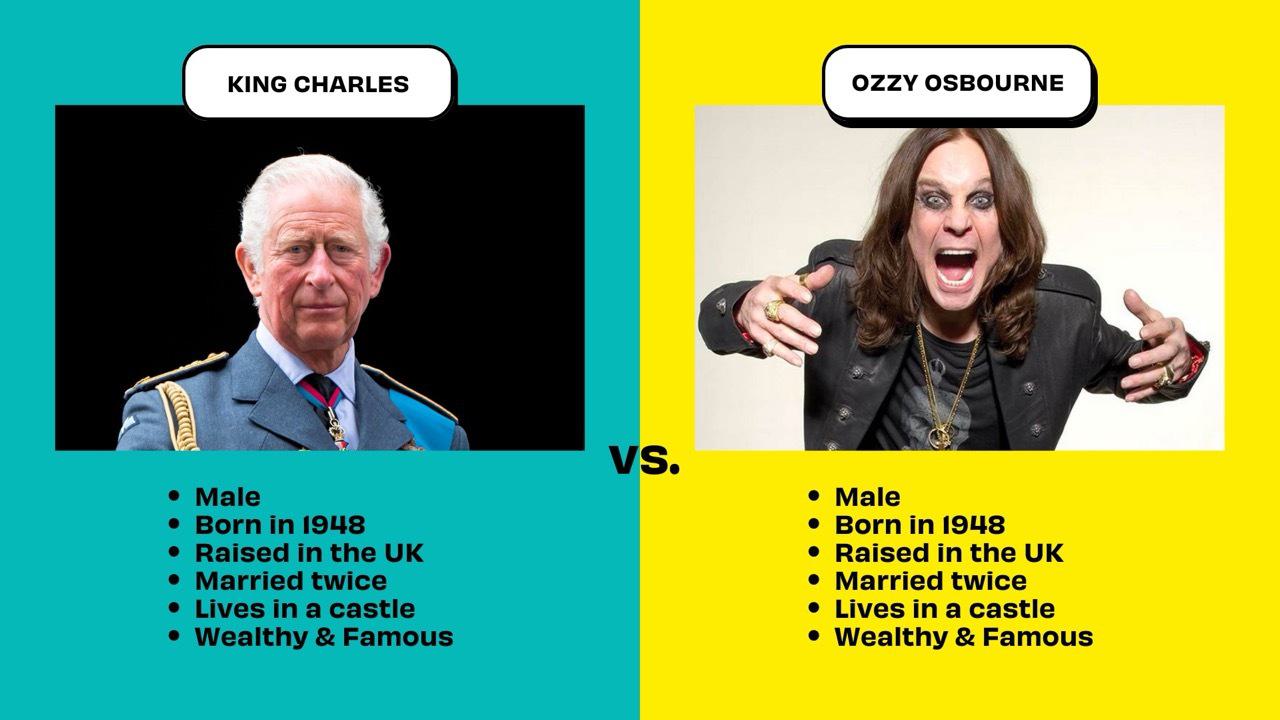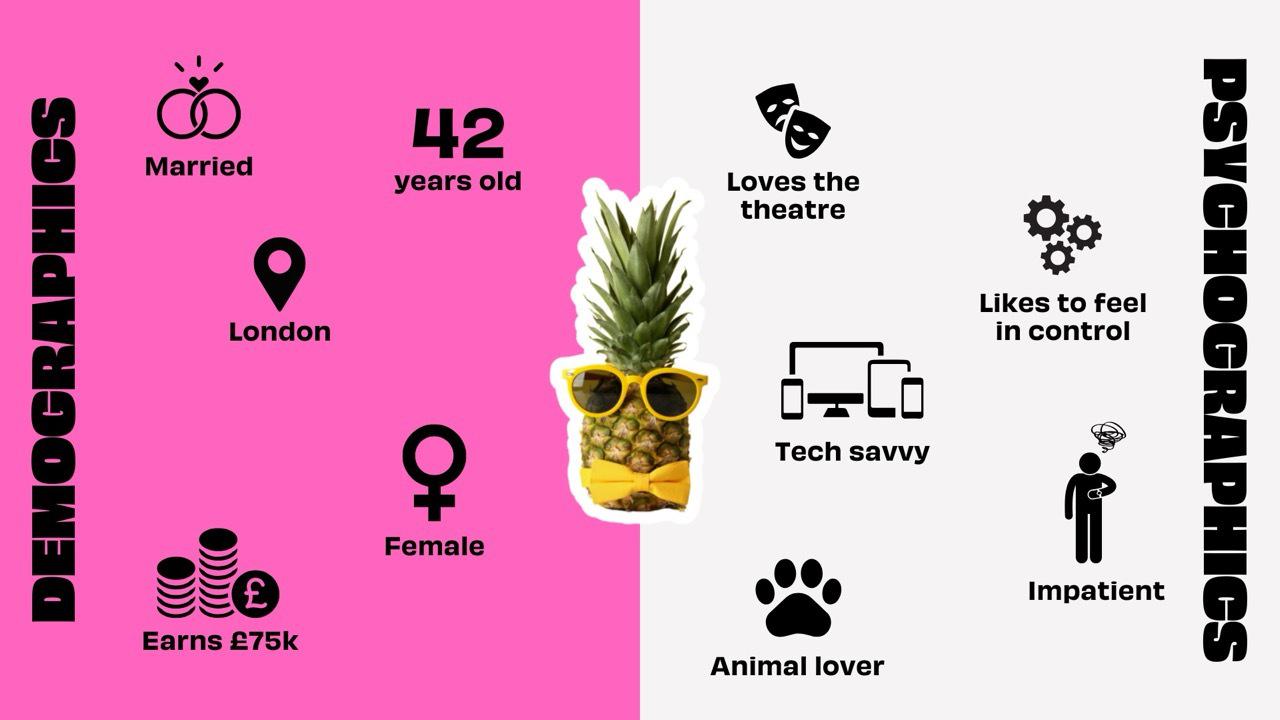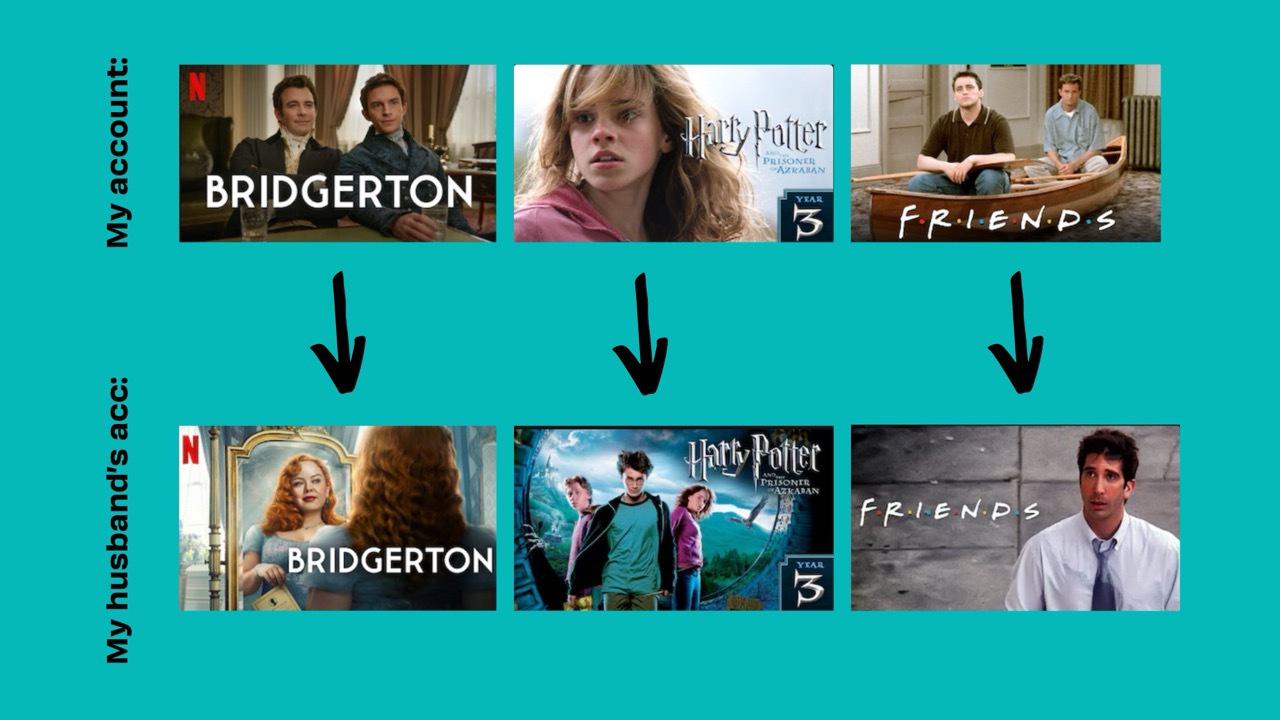want some cookies?
We use cookies to make your browsing experience amazing.

EDITORS NOTE: This article was originally published in February 2023 but has been updated with fresh new insights 🔥
You have probably heard the term ‘learner persona’ bounced around the L&D space in recent years. But do not worry, learner personas are not yet another L&D buzzword. In fact, they’re majorly important in understanding our audiences better. They lead to better marketing and learning approaches which lead to better learner engagement. And better learner engagement absolutely helps to improve learner performance over time.
Sounds sexy, doesn’t it? Yeeeeaaah it does.
WHY DO WE NEED LEARNER PERSONAS?
First things first. Let’s just make sure we’re all speaking the same language here. This is our definition of a learner persona:
“A learner persona is a semi-fictional representation of your learners, combining market research, qualitative and quantitative feedback from employees and YES! some assumptions to provide L&D teams with an actionable audience segment designed to improve both learning design and communication approaches.”
The concept of a persona is not a new one; it’s been used in marketing for years to enable marketers to determine who their target audience is, what channels are going to be effective as well as highlighting key emotional drivers that really help to answer: “What’s in it for me?”. Answering WIIFM is the lynchpin of any successful marketing engagement and it will absolutely be the key to your success when it comes to getting better learner engagement.
BETTER LEARNER ENGAGEMENT
We all want hyper engaged learners, don’t we? Learners who constantly go out of their way to log into your learning platform and learn. Learners who just can’t get enough of learning. Learners who undertake more learning than their brains have room for.
OK. That might be a bit hyperbolic, but at a minimum you really do need your employees to connect better with your learning programmes. After all, that’s why you’re creating learning opportunities for your people in the first place right? Because your business needs them to be better at their jobs, and you need them to learn stuff in order to improve their performance.
Changing behaviour requires a change in tactic.
That business mandate for improving performance may well work for getting L&D’s butts a’movin’, however it’s incredibly ineffective at motivating your learners.
They literally couldn’t care less about what the business wants them to do or why they want them to do it. Yeah you might be able to instigate ‘learning activity’ through fear but this is very shortsighted. We’ll explain later. Just because it’s important to you, does NOT mean it’s important to them.
Instead, your learners care about making their working lives better and easier. They care about getting more time back in their working day. They’re selfish. And so they should be. For some reason though, we always see L&D constantly trying to motivate their employees to learn by using business-mandated reasons. And it just doesn’t work.
If we really want to make them move, we have to capture their hearts and minds. We need to understand who they are, what they want and when they want it. Learner personas help us understand that and enable us to change how we interact with them as a result.
BENEFITS OF CREATING LEARNER PERSONAS
As far as we are concerned, there are bags of benefits to developing learner personas and better segmenting your audiences. However here are our favourite three:
Helps you to improve the targeting of your audiences to make both marketing and learning more effective.
Have more meaningful discourse with your learners, helping you to build trust and better establish the learning culture you strive to establish
Better meet the needs and expectations of your learners through understanding them deeply (#heartfingers) and improving how you personalise their experience
There’s other perks too. Perks like helping you deduce where you should invest time and energy. Perks like improving the efficacy of your learning. Perks that help you enhance the perceptions of your learning and positively influence sentiment around your learning brand.
Still asking yourself why you haven’t built out learner personas yet?
Yep. Us too.
HOW TO BUILD A LEARNER PERSONA
Your learners are all different, so why are we trying to connect with them in the same ways? We’ve borrowed some of the key ideas of a marketing buyer persona and adapted them so that they work for an L&D environment. So to quote almost every single piece of elearning we’ve encountered, let’s get started…
STEP 1: DETERMINE WHO YOU ARE TARGETING
Sounds fairly obvious, doesn’t it? You’d be surprised at how many conversations we've had with both L&D and business owners who just don’t know diddly about their target audience. Oddly, in many cases they just don’t know who they’re trying to reach.
And no, the answer is not "everyone".
Targeting everyone is for chumps, because the reality is that even if you are targeting everyone, they’re all different. They have nuances and triggers and feelings. I’ll say it again: they’re all different. ‘Everyone’ as a target audience isn’t going to cut the mustard and any efforts you undertake using this method will be relatively unsuccessful.
So, take some time to define who it is that you are targeting and then jump straight into the wonderful world of data.
STEP 2: GET USEFUL AND ACTIONABLE SEGMENTATION DATA
To really understand your audience, you’ve got to explore several key data sets to create a three-dimensional learner persona. Typically, vital information is captured in the following key areas:
Demographics
Psychographics
Behaviour
SEGMENTATION TYPE 1: DEMOGRAPHICS
OK - we have a confession. Demographics kind of give us the ick. You know, they make us feel a bit gross. They’re icky. Annnnnnyway…..
Demographics are a very normalised way of segmenting audiences. But that doesn’t make them any good. And that’s because basic information about us such as age, location, marital status, job title, income etc. aren’t good indicators of someone’s challenges, wants and needs. If we think about ‘what’s in it for me’ (WIIFM) and answering that, knowing how old someone is doesn’t provide any actionable information.
We’d explain it further, but we think this meme about Ozzy Osborne and King Charles does a fairly remarkable job of doing just that:

Nevertheless, demographic data tends to be one of the more common segmentation tools that we see L&D use, if they are indeed segmenting at all. In these cases, we believe most revert to this approach because they KNOW they have access to this data and is therefore readily available. But that doesn’t mean we should use it.
Now - we love to see that people are attempting to be more targeted with their communication and learning approaches. But our concern is that using just demographics may well put people into different ‘buckets’ to target. So yes, you are undertaking some level of segmentation; but the messaging will still lack resonance because the buckets are wrong. Basically - your efforts just won’t resonate if you target people exclusively on demographic data.
My advice - steer away from demographics when segmenting.
They can be a trap, especially when looking at basic data like age or job title. Not everyone thinks the same, wants the same things or feels the same way, so for our efforts to be effective we need to dig a bit deeper and leave this pointless data out of our learner persona efforts.
SEGMENTATION TYPE 2: PSYCHOGRAPHICS
Psychographics is the study of consumers based on their activities, interests, and opinions. So in your case, your learners. Yes. They are consumers.
Our whole digital world uses this data these days. The likes of Facebook and Instagram leverage psychographics (as well as behavioural data) to allow advertisers to target audiences with an incredible level of granularity. The result is higher conversion rates and increased efficacy of marketing.
Psychographics extend way beyond the realms of segmenting people based on general demographic data (the data we know isn’t useful). Instead, we’re seeking to understand the cognitive factors that drive learner behaviours such as emotional responses and drivers, their morals and ethics and also their inherent attitudes, biases, and prejudices. Essentially, we want to understand their hearts and minds.
Psychographics are, in our opinion, much more useful than demographic data because they help us to understand the WHY. Why would someone be motivated to learn at work? What are their beliefs around professional development? How can you best position yourself to talk to these angles?
Just look at the image below; here you can see how much more actionable information psychographics give us about our audience.

Suddenly we’re looking at audiences as people. Rather than using structured data like age or gender, which doesn’t really allow us to see the human aspects of them, psychographics really help us better determine their character. Suddenly, we know how they feel and think. And suddenly, we know them a heck of a lot better.
GETTING PSYCHOGRAPHIC DATA ON YOUR LEARNERS
Yes. We know you are sitting there thinking “Pfffttt. I don’t have this data”.
Maybe not, but that doesn’t mean you can’t get it. If you’re really, really serious about improving the impact of your learning and the marketing communications that support it, then you MUST understand your audiences better.
Getting psychographic data isn’t actually that hard; but it can take a bit of time.
Some of the key ways you could seek to get more information about your target audience are:
Interview learners and ask them questions about their wants, needs, desires and more
Create focus groups and ask groups of learners the same questions
Use online surveys/questionnaires and quizzes - if getting your audiences to complete a whole survey is proving challenging, why not send emails with a single question in them, or embed a single question in your intranet? You’re still asking the same questions, but over an extended period of time. Loads of online survey tech will let you do this such as Typeform, SurveyMonkey etc.
Interview learners’ managers - this sounds weird but these people will have a very clear understanding of what is most important to your audiences, what are their blockers, drivers and what’s really grinding their gears. They might even be a learner persona in and of themselves. Two birds, one stone.
Whilst getting this data may be cumbersome and time consuming for you, the treasure trove of information that you will have to improve your targeted efforts will be worth it. We promise.
SEGMENTATION TYPE 3: BEHAVIOUR
What on earth are your people doing when they’re learning? Do they ever visit the LMS? If so, what are they up to when they get there? What times of day do they learn? What topics or content gets them interested?
You’ll likely be familiar with the idea of using behavioural data to more effectively target audiences and provoke a desired response. Many brands use them in the same way as psychographics and for the same reasons; these quantitative insights get results. According to McKinsey, businesses that leverage customer behaviour data to generate behavioural insights outperform peers by 85% in sales growth and more than 25% in gross margin. So what we're saying is, it works.
For example, did you know that Netflix even adjusts the covers for their movies and TV shows based on your previous viewing history? So say you watch a lot of horror and crime documentaries, the cover for something like ‘Stranger Things’ will be very different to someone who is watching reality TV shows and Bridgerton. Oh yeah, that blew my mind too.

That’s not all. You’ll have likely experienced re-targeting as a form of behaviour-based marketing in your online pursuits. If not, I’ll share a personal example with you: Back in 2022 I was deciding on my dress to wear to the Learning Awards (after all, MAAS was a finalist in the ‘Start Up Learning Provider of the Year’ award, so I had to get it right - we won, BTW), so I sent my friend Lori Niles-Hofmann a link to a dress I was considering. Poor her. After she looked at that dress, she was followed around the internet with paid advertisements promoting the same dress. Over and over again. For weeks. Sorry Lori!
Even though it is annoying, this consistent presentation of a product you have ALREADY looked at continues to push you through your buying cycle, forcing you to consider the product again and again and in many cases, eventually buying it. In Lori’s case she wasn’t interested, but that’s because they were unwittingly targeting the wrong person.
So whilst you can’t follow your learners around the interwebs promoting your latest leadership programme (imagine!), you can still use their behaviours to target them differently (and consistent marketing to grab their attention). Depending on the level of sophistication of your learning platform, you may be able to get some behavioural data from it. However we strongly recommend you consider how you can also gather behavioural data outside of the LMS silo.
USING GOOGLE ANALYTICS
Google Analytics is essential for gathering behavioural data. It is typically used by marketers to track browser behaviour on their websites, as well as understand a whole heap of other relevant information such as what channel sent the person to the site, what device they’re browsing on, what country they’re in and so, so much more.
Install this on your LMS and you’ll suddenly be privy to the same information. The beauty of using GA is that even if you change your learning platform down the line, you just need to add the tracking code onto your new platform and all your legacy data will remain intact (yay, I hear you all say. Probably).
ACTION POINT: Even if you have no need for behavioural data right now, install Google Analytics anyway. That’s because it only works from the day you install it - better to have loads of data you’ll never use than want the data and not have any, amirite?
Other behavioural data measurement tools include:
Tracking within learning experiences (and no, we do NOT mean SCORM and completions). We mean content medium, i.e. a clear preference for videos over PDFs, content topics, i.e. a preference for tech-focused skills over soft-skills and even times of day/week that people are learning.
Email opens/clicks
Interaction with push notifications
Interaction with social posts (such as Yammer, Slack etc)
Also don’t forget - sometimes a lack of behaviour is just as significant as someone doing something. For example, if you are finding that people aren’t engaging with some of your learning content, that’s just as significant, if not more, than if uptake was high. This behaviour, or lack thereof, can help you better understand your target audience too.
Behavioural data, when combined with psychographic data, can provide you with a really clear picture of your target audiences and really help you to understand who they are, what they want and need and most importantly, what motivates them to move. The sooner you start seeing this data as strategic, the better.
Once you’ve gathered all the data you can, it’s time for step three.
STEP 3: BE COMFORTABLE MAKING ASSUMPTIONS
Yes, we all know what they say about assumptions, and in many cases they can be dangerous. But unfortunately when it comes to people, humans and their behaviours, we just cannot know everything. Even the likes of Facebook and their limitless tap on our personal data will still have gaps in their understanding of us.
So when you are building your learner personas, use what data you do have to help you plug the gaps. It’s OK to make assumptions, as long as the entire persona isn’t built on assumptions alone. When there is a clear lack of information on your learner persona that you just can’t get, use your common sense to ask yourself: “Knowing what I know about this persona, what do I think is the most likely reaction/response?”
Asking this single question, and validating the answers with several others in your team will help you pad out the missing data. And then you are ready!
STEP 4: BUILD YOUR LEARNER PERSONAS
Once you have collected all your data, it’s time to collate it together and create a brand spankers learner persona. You can design your persona however you like, but we prefer to make it look like a sort of visual CV. That’s just our preference though, so go bananas and create a look and feel that’s appropriate for your brand. Just make sure the layout you select allows anyone who needs to use the learner persona to easily interpret and understand the data.
In many cases, you may well include some demographic data within your learner persona (such as job title, age and gender) but these are purely used for context for users of the persona (i.e. you and the rest of your L&D team) and shouldn’t play a critical role in their overall character.
What we’ll typically include in a learner persona:
Personal profile: who are they? A broad overview of their personality can be useful
Wants and needs
Key professional challenges & pain points
Personal interests
Some people like to include a picture of the learner persona and maybe even give them a name. Do whatever you need to in order to make this persona feel alive and real in your mind. You’ll be holding this persona in your mind’s eye A LOT, so make sure you totally understand who they are.
STRUGGLING TO KNOW WHERE TO START? We’ve got your back, Jack! Here’s our learner persona template, you’re welcome 😘
STEP 5: TEST, TEST, TEST (AND NEVER, EVER STOP)
Here’s where the real fun begins - putting your learner persona into practice. But just before you start using your persona, manage your own expectations and be real about what you’ve created. Chances are, you haven’t gotten it all right on the first go (kudos if you have, you little one-take-wonder, you!)
So, rather than just releasing your learner persona (or personas) out into the wild and thinking you never have to worry about it again, consider what steps you can take to stress test your persona. How can you really see whether it’s accurate and working as well as it should?
Make sure you are doing everything you can to get data on your learner persona’s performance, so that you can carry on with step 6.
Not clear what we mean by testing your learner persona? Here’s a simple example using a basic A/B test in an email:
Let’s say you are using the psychographic data we provided in the earlier visual. You believe one of the main drivers for your persona is the fact that they are impatient, so you want to test this out.
- You create two emails, each with the same internal contents but a different subject line:
FOCUS ON URGENCY = Subject line 1: Get the new skills you need NOW Peter!
FOCUS ON TAKING YOUR TIME = Subject line 2: Give yourself the time you need to succeed Peter!
You monitor the open rate of each of the two emails
The outcome of the test will help you understand your learner persona better.
Now, this is a simple test and you shouldn’t say to yourself “OK, way more people opened the email with subject line one. That means my persona is absolutely impatient.” Instead seek to gather a body of information and draw conclusions from that; one email, one data point, does not signify much. So get as much data as you can in your testing and then move on to step 6.
STEP 6: ITERATE AND EVOLVE
Once you have some data on how your learner persona is performing, you can then adjust and evolve it over time. Use information from your learning and communication efforts to help you realign your persona and include new attributes as they become relevant.
Remember: a learner persona is a living, breathing thing that you should tend to regularly. It’s not a ‘one and done’ situation. Keep it thriving and alive by feeding it new information that you have gathered based on your audience's behaviour. And never, ever stop.
The beauty of creating a robust, visceral learner persona is that it can be used in a variety of applications in L&D. After all, it’s ultimately helping you understand your audiences better, so whilst we are suggesting using it to help you improve your marketing for learning® efforts, why not use it to help inform your learning programmes and the learning experiences you are developing too?
One persona. Dozens of applications. Sounds like a task worth completing, doesn’t it?
WANNA SEE LEARNER PERSONA DEVELOPMENT IN ACTION?
Well you're in luck. Han recorded a vlog while she created learner personas for a client a while back. This video takes you through every single step of the process – the research, ideation, creation, the lot! Happy watching:









